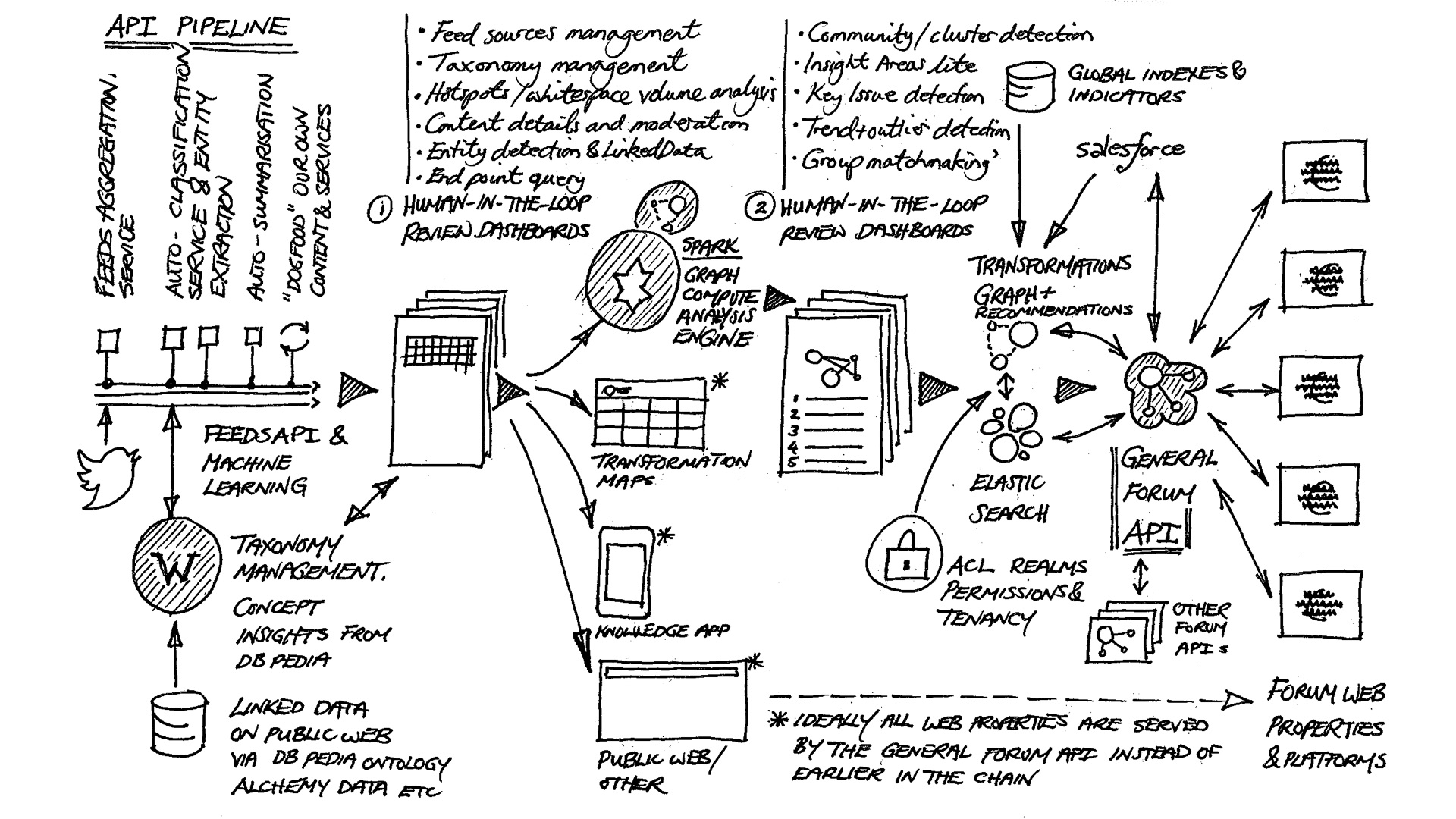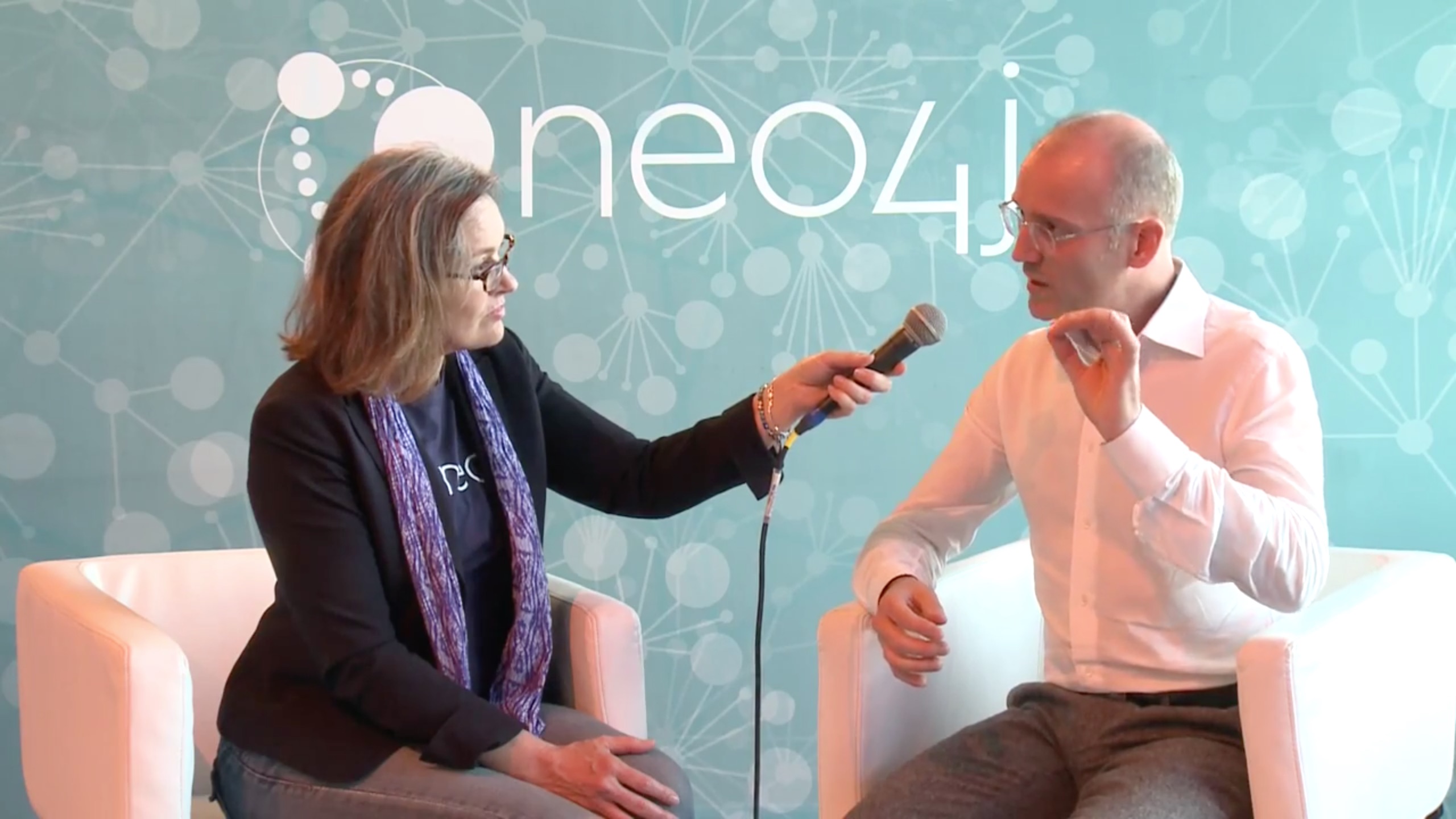How do leaders know what to pay attention to in such a challenging and fast-changing world? Advisors, consultants, and intelligence networks synthesise relevant ideas and trends into advice. They extract ideas from the wider world of media and social networks. The internet provides a valuable resource, but because Knowledge Modelling is still in its infancy, it is not as effective as it soon will be.
We addressed this with a digital product, using Machine Learning technologies. It provides a personalised filter of insights structured to the decision making process. This bespoke system ingests content from authoritative leadership and research sources. It then extracts concepts, and the names of people, companies and places. The system classifies that information against a global issues taxonomy. The machine then summarises it and distributes key insights to our knowledge and intelligence infrastructure. Using human-in-the-loop data dashboards, we reveal the clustering of concepts that we will roadmap into trend analysis.
This Machine Learning prototype has matured into a live production infrastructure. It powers our members’ social platform, and is the engine behind the World Economic Forum’s Knowledge App.
The creative process and my role
There are four key elements to address when making this kind of cognitive software – access to technologies, expertise, budget and creative systems thinking. I tackled these separately but in parallel.
I reached out to my network to find the expertise, researched the suppliers of Cognition as a Service, and visited O’Reilly Strata where I spoke to the IBM BlueMix team and other participants who work in this area. It became clear that we could build something incredible by assembling a Micro-services API that threaded together Machine Learning suppliers’ services, all billed at low monthly cost to my credit card.
For the creative systems thinking, that’s my area of expertise. I assigned five driving principles for this digital product – advisors, synthesis, discovery, trends, and signals. And with the brainpower and enthusiasm of a small but deeply effective team, we built a unique API infrastructure in a few months. It is used across multiple digital products, and contains human in the loop analysis dashboards that visualise patterns coming from the Machine Learning. The first proof-of-concept prototype cost €15,000 in labour and services combined.
 Development team and technologies
Development team and technologies
The prototyping team comprised a Chief Scientist of Artificial Intelligence, a Machine Learning developer, and myself. Skype connected Germany, Turkey and Switzerland together for the team meetings. The API was written in Clojure for its functional and high level processing capabilities. The admin dashboards queried the API for its data views, and used D3.js for visualisation. For Machine Learning we used IBM BlueMix, AlchemyAPI, Aylien, and Sajari.
Once the prototype had been evolved into a functioning product, it was taken over by a team of 5 developers in London, who hardened it for production readiness, and connect it into a mobile app.
Related content
Neo4j interviewed me at GraphConnect
Building a Global Issues Graph for world leaders
Beyond CRM: The promise of Cognition Management Platforms
Transformation Maps launch at the World Economic Forum in Davos
Launching a social platform for global leaders

Scott David leads User Experience strategy and design at the World Economic Forum, across their digital platforms for data-driven knowledge and communities of global leadership.














